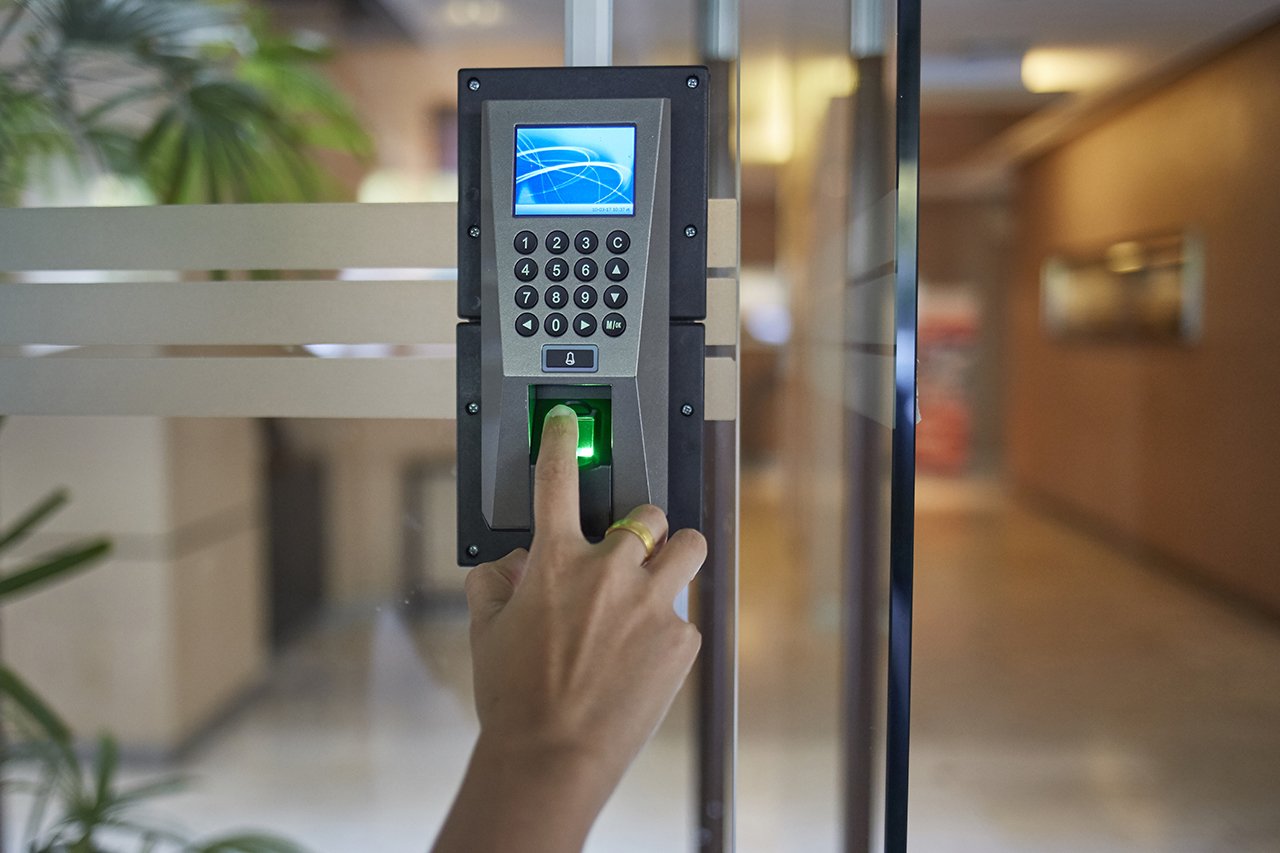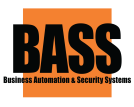
In the fields of physical security and information security, access control (AC) is the selective restriction of access to a place or other resource while access management describes the process. The act of accessing may mean consuming, entering, or using. Permission to access a resource is called authorization.
Locks and login credentials are two analogous mechanisms of access control.
Geographical access control may be enforced by personnel (e.g. border guard, bouncer, ticket checker), or with a device such as a turnstile. There may be fences to avoid circumventing this access control.
In the fields of physical security and information security, access control (AC) is the selective restriction of access to a place or other resource while access management describes the process. The act of accessing may mean consuming, entering, or using. Permission to access a resource is called authorization.
Locks and login credentials are two analogous mechanisms of access control.
Geographical access control may be enforced by personnel (e.g. border guard, bouncer, ticket checker), or with a device such as a turnstile. There may be fences to avoid circumventing this access control.
Electronic access control (EAC) uses computers to solve the limitations of mechanical locks and keys. A wide range of credentials can be used to replace mechanical keys. The electronic access control system grants access based on the credential presented. When access is granted, the door is unlocked for a predetermined time and the transaction is recorded. When access is refused, the door remains locked and the attempted access is recorded. The system will also monitor the door and alarm if the door is forced open or held open too long after being unlocked.
When a credential is presented to a reader, the reader sends the credential’s information, usually a number, to a control panel, a highly reliable processor. The control panel compares the credential’s number to an access control list, grants or denies the presented request, and sends a transaction log to a database. When access is denied based on the access control list, the door remains locked. If there is a match between the credential and the access control list, the control panel operates a relay that in turn unlocks the door. The control panel also ignores a door open signal to prevent an alarm. Often the reader provides feedback, such as a flashing red LED for an access denied and a flashing green LED for an access granted.
Credentials can be passed around, thus subverting the access control list. For example, Alice has access rights to the server room, but Bob does not. Alice either gives Bob her credential, or Bob takes it; he now has access to the server room. To prevent this, two-factor authentication can be used. In a two factor transaction, the presented credential and a second factor are needed for access to be granted; another factor can be a PIN, a second credential, operator intervention, or a biometric input
Today, the typical credential is an access card or key-fob, and newer software can also turn users’ smartphones into access devices.
There are many card technologies including magnetic stripe, bar code, Wiegand, 125 kHz proximity,26-bit card-swipe, contact smart cards, and contactless smart cards.
Also available are key-fobs, which are more compact than ID cards, and attach to a key ring.
Biometric technologies include fingerprint, facial recognition, iris recognition, retinal scan, voice, and hand geometry. The built-in biometric technologies found on newer smartphones can also be used as credentials in conjunction with access software running on mobile devices.
In addition to older more traditional card access technologies, newer technologies such as Near field communication (NFC), Bluetooth low energy or Ultra-wideband (UWB) can also communicate user credentials to readers for system or building access.
Components of an access control system include:
An access control panel (also known as a controller)
An access-controlled entry, such as a door, turnstile, parking gate, elevator, or other physical barrier
A reader installed near the entry. (In cases where the exit is also controlled, a second reader is used on the opposite side of the entry.)
Locking hardware, such as electric door strikes and electromagnetic locks
A magnetic door switch for monitoring door position
Request-to-exit (RTE) devices for allowing egress. When a RTE button is pushed, or the motion detector detects motion at the door, the door alarm is temporarily ignored while the door is opened. Exiting a door without having to electrically unlock the door is called mechanical free
Serial main controllers & intelligent readers.
All door hardware is connected directly to intelligent or semi-intelligent readers. Readers usually do not make access decisions, and forward all requests to the main controller. Only if the connection to the main controller is unavailable, will the readers use their internal database to make access decisions and record events. Semi-intelligent reader that have no database and cannot function without the main controller should be used only in areas that do not require high security. Main controllers usually support from 16 to 64 readers. All advantages and disadvantages are the same as the ones listed in the second paragraph.
Network-enabled main controllers.
The topology is nearly the same as described in thes econd and third paragraphs. The same advantages and disadvantages apply, but the on-board network interface offers a couple of valuable improvements. Transmission of configuration and user data to the main controllers is faster, and may be done in parallel. This makes the system more responsive, and does not interrupt normal operations. No special hardware is required in order to achieve redundant host PC setup: in the case that the primary host PC fails, the secondary host PC may start polling network controllers. The disadvantages introduced by terminal servers(listed in the fourth paragraph) are also eliminated.
IP controllers
Controllers are connected to a host PC via Ethernet LAN or WAN.
Advantages:
An existing network infrastructure is fully utilized, and there is no need to install new communication lines.
There are no limitations regarding the number of controllers (as the 32 per line in cases of RS-485).
Special RS-485 installation, termination, grounding and troubleshooting knowledge is not required.
Communication with the controllers may be done at the full network speed, which is important if transferring a lot of data (databases with thousands of users, possibly including biometric records).
In case of an alarm, controllers may initiate connection to the host PC. This ability is important in large systems, because it serves to reduce network traffic caused by unnecessary polling.
Simplifies installation of systems consisting of multiple sites that are separated by large distances. A basic Internet link is sufficient to establish connections to the remote locations.
Wide selection of standard network equipment is available to provide connectivity in various situations (fiber, wireless, VPN, dual path, PoE)
Disadvantages:
The system becomes susceptible to network related problems, such as delays in case of heavy traffic and network equipment failures.
Access controllers and workstations may become accessible to hackers if the network of the organization is not well protected. This threat may be eliminated by physically separating the access control network from the network of the organization. Most IP controllers utilize either Linux platform or proprietary operating systems, which makes them more difficult to hack. Industry standard data encryption is also used.
Maximum distance from a hub or a switch to the controller (if using a copper cable) is 100 meters (330 ft).
Operation of the system is dependent on the host PC. In case the host PC fails, events from controllers are not retrieved and functions that require interaction between controllers (i.e. anti-pass back) stop working. Some controllers, however, have a peer-to-peer communication option in order to reduce dependency on the host PC.
IP readers
Readers are connected to a host PC via Ethernet LAN or WAN.
Advantages:
Most IP readers are PoE capable. This feature makes it very easy to provide battery backed power to the entire system, including the locks and various types of detectors (if used).
IP readers eliminate the need for controller enclosures.
Access control door wiring when using intelligent readers and IO module
There is no wasted capacity when using IP readers (e.g. a 4-door controller would have 25% of unused capacity if it was controlling only 3 doors).
IP reader systems scale easily: there is no need to install new main or sub-controllers.
Failure of one IP reader does not affect any other readers in the system.
Disadvantages:
In order to be used in high-security areas, IP readers require special input/output modules to eliminate the possibility of intrusion by accessing lock and/or exit button wiring. Not all IP reader manufacturers have such modules available.
Being more sophisticated than basic readers, IP readers are also more expensive and sensitive, therefore they should not be installed outdoors in areas with harsh weather conditions, or high probability of vandalism, unless specifically designed for exterior installation. A few manufacturers make such models.
The advantages and disadvantages of IP controllers apply to the IP readers as well.

